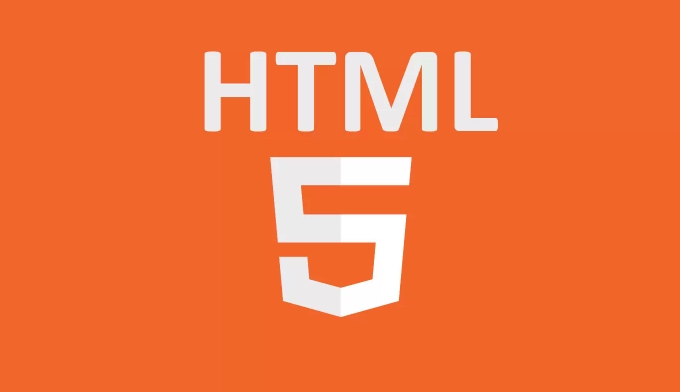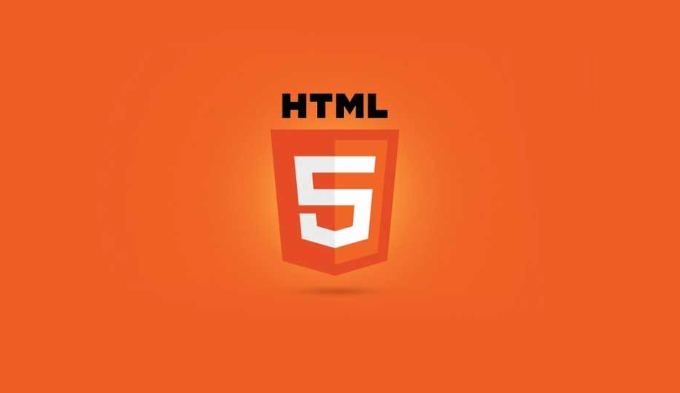localStorage is a client persistent storage solution provided by HTML5, suitable for saving small data such as user preferences. 1. It has a long life cycle and does not lose data after closing the page or browser; 2. The scope is homologous and supports multi-tag sharing; 3. It can only store strings, and objects need to be converted by JSON.stringify(); 4. Common APIs include setItem, getItem, removeItem and clear; 5. The storage upper limit is usually 5MB, and an error will be reported after exceeding the limit; 6. Pay attention to performance, security and cross-domain issues when using it.

Using HTML5's localStorage API for persistent data storage is actually a very practical trick. It is not like cookies that every request is transmitted to the server, but is directly stored in the browser, suitable for storing some data such as user preferences and status information. The point is that it is "persistent" and will not be lost even if the page is closed.

1. What is localStorage? What are the characteristics?
localStorage is a client storage method provided by HTML5, which is similar to sessionStorage, but the difference is:

- Different life cycles : sessionStorage closes the tab page and is gone, localStorage remains until manually cleared or deleted.
- Different scopes : they are all homologous restrictions, but do not affect cross-tab communication. Multiple tabs can read and write the same localStorage data.
It can only store strings, so if you want to store objects or arrays, you have to use JSON.stringify() to turn them first.
2. How to use it? The basic operation is very simple
The localStorage API is very simple, and several commonly used methods:

- Save data:
localStorage.setItem('key', 'value') - Get data:
localStorage.getItem('key') - Delete data:
localStorage.removeItem('key') - Clear all:
localStorage.clear()
For example, if you want to remember the user's nickname:
//Save localStorage.setItem('username', 'JohnDoe'); // Take const name = localStorage.getItem('username'); console.log(name); // Output JohnDoe // Delete localStorage.removeItem('username');
Note that if you don't delete it, this value will always exist, even if you refresh the page, close it and open the website, it will still be there.
3. How big data can be stored? Are there any restrictions?
Although it is called "persistent storage", it is not infinite space. Generally speaking:
- The browser usually allocates about 5MB of space to localStorage
- Different browsers may differ slightly, such as Chrome and Firefox are slightly different
- If the capacity is exceeded, a QUOTA_EXCEEDED_ERR error will be thrown
So don't think about using it to save large files or large amounts of structural data. If you find that you can't save it, it may be over.
4. What issues should be paid attention to when using it?
There are several details that are easy to get stuck:
- Only strings can be stored , and the object is remembered by JSON.stringify()
- Synchronous operation , frequent reading and writing may affect performance (but generally not too serious)
- Security issues : Do not store sensitive information, because it is stored in plain text
- Cross-domain isolation : localStorage under different domain names is completely independent
For example, if you want to save a user settings object:
const settings = {
theme: 'dark',
fontSize: 16,
};
// Make correct approach localStorage.setItem('userSettings', JSON.stringify(settings));
// When reading, parse must come back and const stored = localStorage.getItem('userSettings');
const parsedSettings = stored ? JSON.parse(stored) : null;Basically that's it. localStorage is quite convenient, but not omnipotent. It is very appropriate to use the right scenario, such as remembering user preferences and caching small data.
The above is the detailed content of Persistent Data Storage with HTML5 localStorage API. For more information, please follow other related articles on the PHP Chinese website!

Hot AI Tools

Undress AI Tool
Undress images for free

Undresser.AI Undress
AI-powered app for creating realistic nude photos

AI Clothes Remover
Online AI tool for removing clothes from photos.

Clothoff.io
AI clothes remover

Video Face Swap
Swap faces in any video effortlessly with our completely free AI face swap tool!

Hot Article

Hot Tools

Notepad++7.3.1
Easy-to-use and free code editor

SublimeText3 Chinese version
Chinese version, very easy to use

Zend Studio 13.0.1
Powerful PHP integrated development environment

Dreamweaver CS6
Visual web development tools

SublimeText3 Mac version
God-level code editing software (SublimeText3)

Hot Topics
 Audio and Video: HTML5 VS Youtube Embedding
Jun 19, 2025 am 12:51 AM
Audio and Video: HTML5 VS Youtube Embedding
Jun 19, 2025 am 12:51 AM
HTML5isbetterforcontrolandcustomization,whileYouTubeisbetterforeaseandperformance.1)HTML5allowsfortailoreduserexperiencesbutrequiresmanagingcodecsandcompatibility.2)YouTubeofferssimpleembeddingwithoptimizedperformancebutlimitscontroloverappearanceand
 What is the purpose of the input type='range'?
Jun 23, 2025 am 12:17 AM
What is the purpose of the input type='range'?
Jun 23, 2025 am 12:17 AM
inputtype="range" is used to create a slider control, allowing the user to select a value from a predefined range. 1. It is mainly suitable for scenes where values ??need to be selected intuitively, such as adjusting volume, brightness or scoring systems; 2. The basic structure includes min, max and step attributes, which set the minimum value, maximum value and step size respectively; 3. This value can be obtained and used in real time through JavaScript to improve the interactive experience; 4. It is recommended to display the current value and pay attention to accessibility and browser compatibility issues when using it.
 Adding drag and drop functionality using the HTML5 Drag and Drop API.
Jul 05, 2025 am 02:43 AM
Adding drag and drop functionality using the HTML5 Drag and Drop API.
Jul 05, 2025 am 02:43 AM
The way to add drag and drop functionality to a web page is to use HTML5's DragandDrop API, which is natively supported without additional libraries. The specific steps are as follows: 1. Set the element draggable="true" to enable drag; 2. Listen to dragstart, dragover, drop and dragend events; 3. Set data in dragstart, block default behavior in dragover, and handle logic in drop. In addition, element movement can be achieved through appendChild and file upload can be achieved through e.dataTransfer.files. Note: preventDefault must be called
 How can you animate an SVG with CSS?
Jun 30, 2025 am 02:06 AM
How can you animate an SVG with CSS?
Jun 30, 2025 am 02:06 AM
AnimatingSVGwithCSSispossibleusingkeyframesforbasicanimationsandtransitionsforinteractiveeffects.1.Use@keyframestodefineanimationstagesforpropertieslikescale,opacity,andcolor.2.ApplytheanimationtoSVGelementssuchas,,orviaCSSclasses.3.Forhoverorstate-b
 HTML audio and video: Examples
Jun 19, 2025 am 12:54 AM
HTML audio and video: Examples
Jun 19, 2025 am 12:54 AM
Audio and video elements in HTML can improve the dynamics and user experience of web pages. 1. Embed audio files using elements and realize automatic and loop playback of background music through autoplay and loop properties. 2. Use elements to embed video files, set width and height and controls properties, and provide multiple formats to ensure browser compatibility.
 What is WebRTC and what are its main use cases?
Jun 24, 2025 am 12:47 AM
What is WebRTC and what are its main use cases?
Jun 24, 2025 am 12:47 AM
WebRTC is a free, open source technology that supports real-time communication between browsers and devices. It realizes audio and video capture, encoding and point-to-point transmission through built-in API, without plug-ins. Its working principle includes: 1. The browser captures audio and video input; 2. The data is encoded and transmitted directly to another browser through a security protocol; 3. The signaling server assists in the initial connection but does not participate in media transmission; 4. The connection is established to achieve low-latency direct communication. The main application scenarios are: 1. Video conferencing (such as GoogleMeet, Jitsi); 2. Customer service voice/video chat; 3. Online games and collaborative applications; 4. IoT and real-time monitoring. Its advantages are cross-platform compatibility, no download required, default encryption and low latency, suitable for point-to-point communication
 How to create animations on a canvas using requestAnimationFrame()?
Jun 22, 2025 am 12:52 AM
How to create animations on a canvas using requestAnimationFrame()?
Jun 22, 2025 am 12:52 AM
The key to using requestAnimationFrame() to achieve smooth animation on HTMLCanvas is to understand its operating mechanism and cooperate with Canvas' drawing process. 1. requestAnimationFrame() is an API designed for animation by the browser. It can be synchronized with the screen refresh rate, avoid lag or tear, and is more efficient than setTimeout or setInterval; 2. The animation infrastructure includes preparing canvas elements, obtaining context, and defining the main loop function animate(), where the canvas is cleared and the next frame is requested for continuous redrawing; 3. To achieve dynamic effects, state variables, such as the coordinates of small balls, are updated in each frame, thereby forming
 How to check if a browser can play a specific video format?
Jun 28, 2025 am 02:06 AM
How to check if a browser can play a specific video format?
Jun 28, 2025 am 02:06 AM
To confirm whether the browser can play a specific video format, you can follow the following steps: 1. Check the browser's official documents or CanIuse website to understand the supported formats, such as Chrome supports MP4, WebM, etc., Safari mainly supports MP4; 2. Use HTML5 tag local test to load the video file to see if it can play normally; 3. Upload files with online tools such as VideoJSTechInsights or BrowserStackLive for cross-platform detection. When testing, you need to pay attention to the impact of the encoded version, and you cannot rely solely on the file suffix name to judge compatibility.






